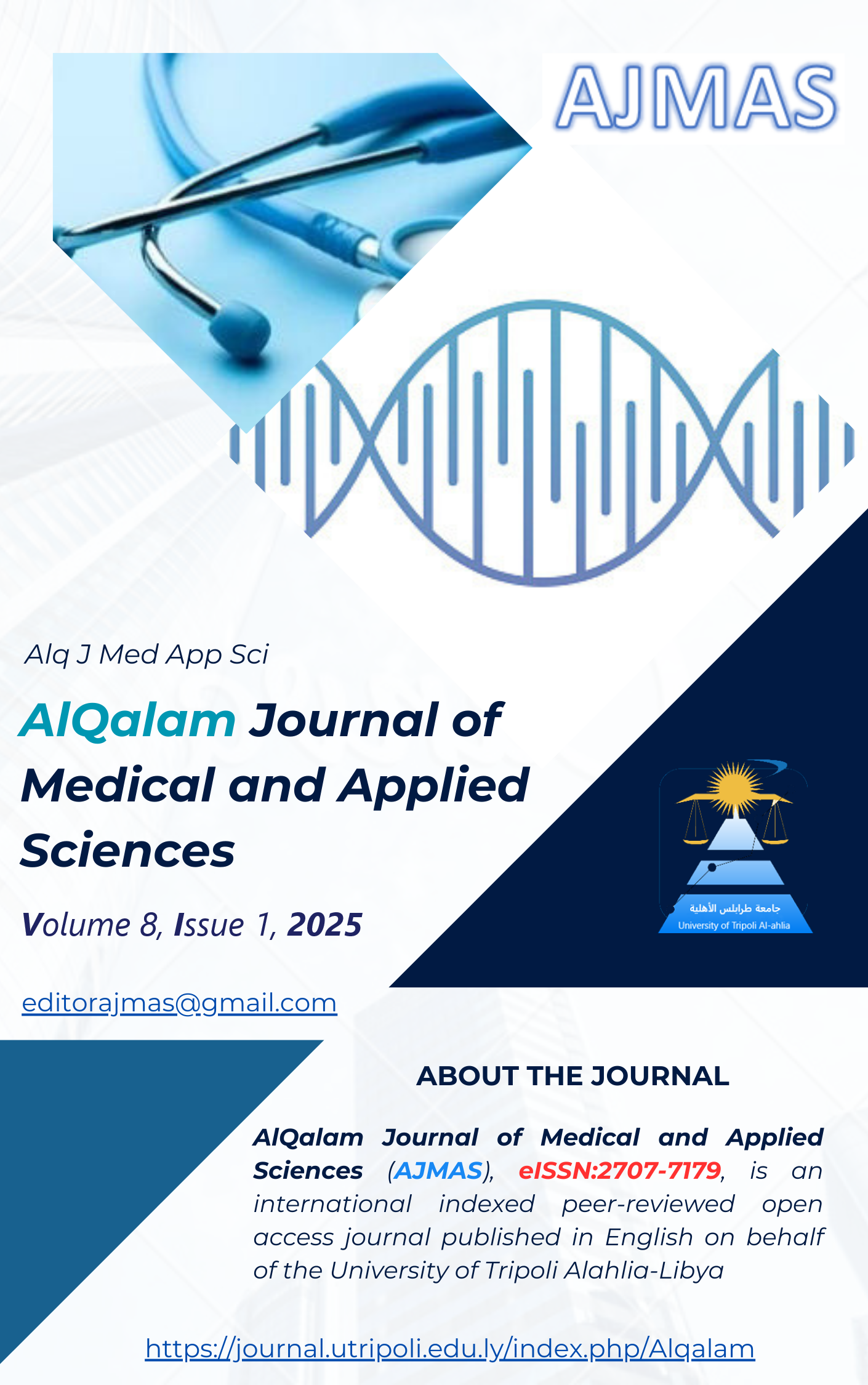Characterization and Environmental Impact of Produced Water from Oil Fields in the Sirte Basin, Libya
DOI:
https://doi.org/10.54361/ajmas.258111Keywords:
Produced Water, Heavy Metals, Total Dissolved Solids, Sirte Basin, Environmental PollutionAbstract
This study evaluates the characteristics and environmental implications of produced water discharged from Zaltan, Al-Lahib, and Al-Jabal oil fields in the Sirte Basin, Libya. The fields collectively produce 217,800 barrels of untreated produced water daily, containing exceptionally high levels of total dissolved solids (TDS) ranging from 40,000 ppm (Zaltan) to 160,000 ppm (Al-Lahib). Elevated concentrations of heavy metals, including mercury (100 mg/L), iron (105 mg/L), and lead (65 mg/L) in Al-Lahib, far exceed safe environmental limits. Inorganic ions such as chloride (26,658 mg/L), nitrate (10,034 mg/L), and bicarbonate (12,806 mg/L) contribute to significant salinization and groundwater contamination risks. These findings highlight the severe environmental impact of produced water discharge, including soil degradation, ecosystem disruption, and threats to public health. Implementing advanced treatment technologies, such as reverse osmosis, electrocoagulation, and constructed wetlands, is recommended to mitigate these risks and ensure sustainable water management.
تُقيّم هذه الدراسة خصائص المياه المصاحبة المنبعثة من حقول النفط زلطن، واللهيب، والجبل في حوض سرت بليبيا، وتأثيراتها البيئية. تنتج هذه الحقول معًا حوالي 217,800 برميل يوميًا من المياه المصاحبة غير المعالجة، والتي تحتوي على مستويات عالية جدًا من المواد الصلبة الذائبة الكلية (TDS) تتراوح بين 40,000 جزء في المليون (زلطن) و160,000 جزء في المليون (اللهيب). كما تم تسجيل تركيزات مرتفعة للمعادن الثقيلة، بما في ذلك الزئبق (100 ملغ/لتر)، والحديد (105 ملغ/لتر)، والرصاص (65 ملغ/لتر) في حقل اللهيب، وهي تفوق بكثير الحدود البيئية الآمنة. تسهم الأيونات غير العضوية، مثل الكلوريد (26,658 ملغ/لتر)، والنترات (10,034 ملغ/لتر)، والبيكربونات (12,806 ملغ/لتر)، في زيادة ملوحة التربة ومخاطر تلوث المياه الجوفية. تُبرز هذه النتائج التأثير البيئي الخطير لانبعاث المياه المصاحبة، بما في ذلك تدهور التربة، واضطراب الأنظمة البيئية، والتهديدات للصحة العامة. توصي الدراسة بتطبيق تقنيات معالجة متقدمة، مثل التناضح العكسي، والتخثر الكهربائي، والأراضي الرطبة المُنشأة، للتخفيف من هذه المخاطر وضمان إدارة مستدامة للمياه
Downloads
Published
How to Cite
Issue
Section
License
Copyright (c) 2025 Khaled Aghow, Salah Idris

This work is licensed under a Creative Commons Attribution 4.0 International License.















